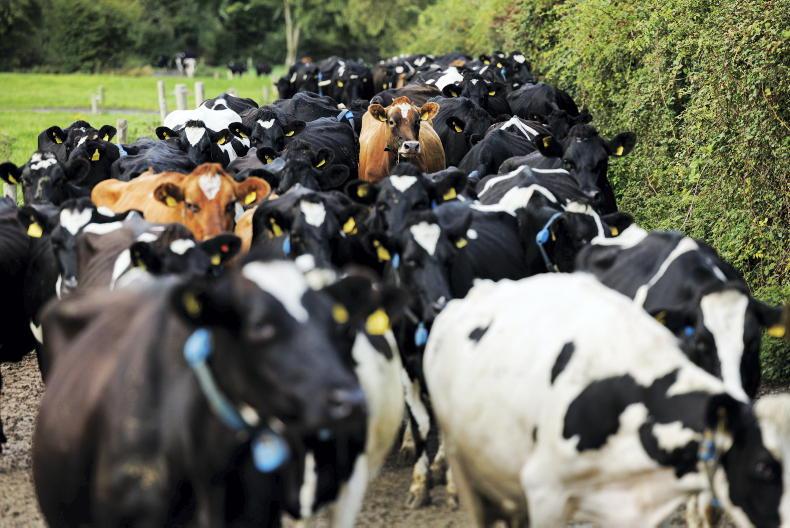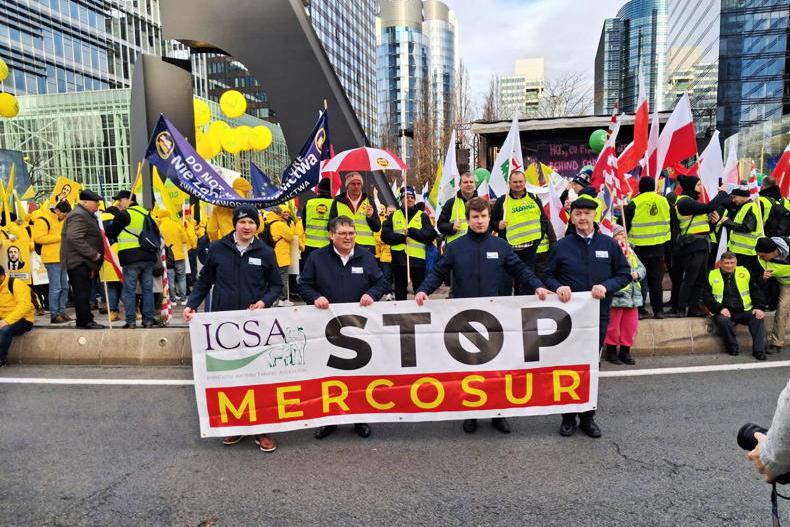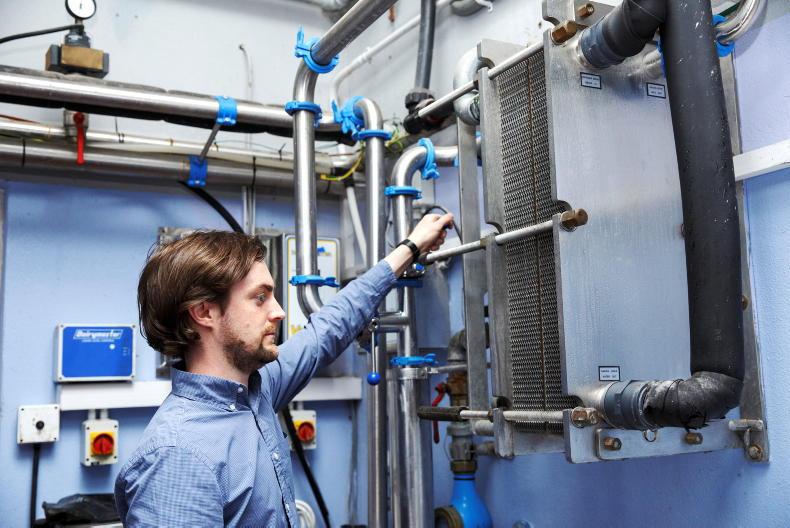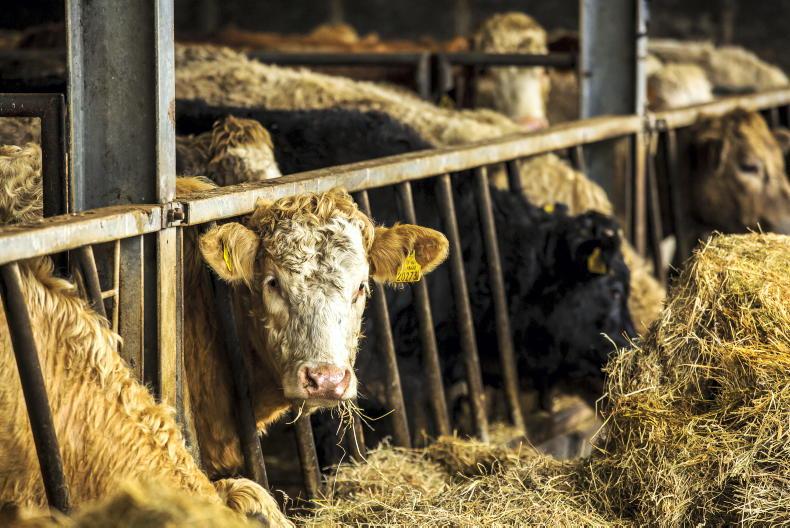Recent analysis by the Irish Farmers Journal has found that margins from dairy farming in 2023 are likely to be less than 10c/l – the lowest in over six years. While the price of milk continues to be historically high, margin is being squeezed because costs are so high.
What can farmers do to cut costs? The easy answer is not much, because inflation is still high.
By far and away the largest cost category on dairy farms in 2022 was the cost of feeding animals with meal, purchased forage and fertiliser costs coming to over 12c/l on most farms, accounting for about one third of all costs. There must be a focus on reducing feed costs.
A drought last summer caught a lot of farmers out and meant more meal had to be fed than planned.
On average, meal usage increased by about 30% on affected farms. Many farms, including well-run dairy farms, are now routinely feeding over 1t of meal per cow.
Whatever about a return from feeding meal last season, at current meal and milk prices it definitely doesn’t pay.
Farmers need to get back into the routine of feeding 500kg to 600kg of meal per cow per year.
Reducing meal feeding rates this year by, say, 400kg per cow will reduce total costs by 2.9c/l.
If grass quality is good, it will have a negligible impact on milk yield so if you are to worry about doing this, worry about grass quality. In order to achieve this reduction, cows must be on little or no meal for the summer months of June, July and August.
Many dairy farms have batch feeding systems installed in the milking parlours, which have a minimum feeding rate of 0.8kg per pull. This means 1.6kg of meal will be fed per cow per day if every cow is to be fed the minimum amount.
This is too much, so either feeding has to stop completely or every second feeder blanked off or only feed every second or third row in the parlour.
The cost of rearing replacement heifers has skyrocketed in recent years. Back in 2015, heifer rearing costs were about 1.1c/l whereas they are over 2.3c/l now.
Some of this is to do with higher contract-rearing charges but even on farms that are not contract-rearing costs have spiralled.
Rearing too many heifers is more madness
Feeding high rates of milk replacer is proving costly and unnecessary. OK, it’s too late to change calf feeding policy this year, but lessons need to be learned. I see farmers dumping whole milk and feeding powder milk because the computerised feeders can only take powder – madness. Rearing too many heifers is more madness.
Some do so on the promise or hope of expansion but that’s poor policy. It’s as cheap to buy excellent-quality heifers as it is to rear your own middling quality ones.
Many farmers correctly paid extra for contract rearing when costs went high last year. If costs fall later in the year, then maybe another chat is required to bring fees back.
Feeding meal to calves all summer is another luxury expense with little to no return.
Between carrying less replacements and feeding them less imported feed, I think 0.5c/l could be shaved off heifer-rearing costs.
Another big cost on farms is contractor costs which come to almost 3.5c/l on average.
Higher fuel and labour costs saw a big increase in contractor charges in 2022.
A good and reliable contractor is an integral part of any successful dairy farm, so I’m loath to suggest farmers start shopping around for lower prices.
Two things that can be done; firstly, make it policy to pay going out the gate and they should offer a good discount for that because cashflow, or lack of it, is often a problem in that sector.
Secondly, be prudent about the use of contractors. Tasks such as zero grazing in late autumn are questionable.
If there are fewer surplus stock on the farm then the amount of silage to be made and slurry to be spread is less.
Investments in technology come at a price. Not only is the capital cost high, but the servicing costs are also high.
Take automatic milking equipment – expensive to purchase day one relative to a basic milking parlour and expensive to maintain with little option to shop around for repairs or spare parts.
Last year, repairs and maintenance costs averaged over 0.50c/l or €2,500 for a 100-cow farm
The same applies to lots of other equipment purchased on farms such as calf feeders and robotic scrapers.
Basic equipment is cheaper to buy, more reliable and costs less to fix – important to remember if planning capital expenditure.
Last year, repairs and maintenance costs averaged over 0.50c/l or €2,500 for a 100-cow farm.
It makes sense to carry out additional repairs when milk price is good and the cash is there to pay for it.
The flip side is that only essential repairs should be carried out when milk price is lower or margin is low, like it will be this year.
Obviously, if a pump goes in the milking parlour you’ve no choice but to fix it, but perhaps another year could be got out of the tractor tyres, etc.
Electricity, tractor fuel and gas costs on dairy farms were up about 30% in 2022 compared to 2015 prices.
While many would have expected costs to be higher in 2022, electricity prices didn’t really peak until autumn, past peak production when energy for milking and milk cooling accounts for a disproportionate amount of electricity usage.
There is a huge range between farms in electricity costs per litre of milk produced.
Being on night-rate electricity is a must
Some of this can be explained by increased usage due to inefficient milk cooling (no plate cooler, inefficient bulk tank), longer milking times or heavier loads such as rotary parlours.
Being on night-rate electricity is a must and about half of the total units used on the farm should be on the night rate, which is about half the cost of the day rate. You must shop around for electricity to get the best rates and the new-joiner discounts. This can help shave 20% to 30% off electricity unit costs.
By looking at all costs and making savings by focusing on using less and buying cheaper it could be possible to reduce costs by up to 5c/l this year. That comes to about €25,000 for a typical 100-cow farmer, so very significant but certainly not easy.
Readers will note I haven’t mentioned fertiliser at all – this is coming down in price anyway but given where soil fertility is nationally, reducing fertiliser use, particularly compound fertiliser, would be a false economy. It’s a different story where clover contents are good enough to replace nitrogen.
The other area to look at is improving income by improving grass quality, which is effectively free.
Higher milk yields and higher fat and protein percentage is the dividend from measuring and managing grass. This could add another 2c/l to 4c/l to milk price, so is really worth chasing.
Join a grass course or a discussion group if you need to upskill in this area.









SHARING OPTIONS